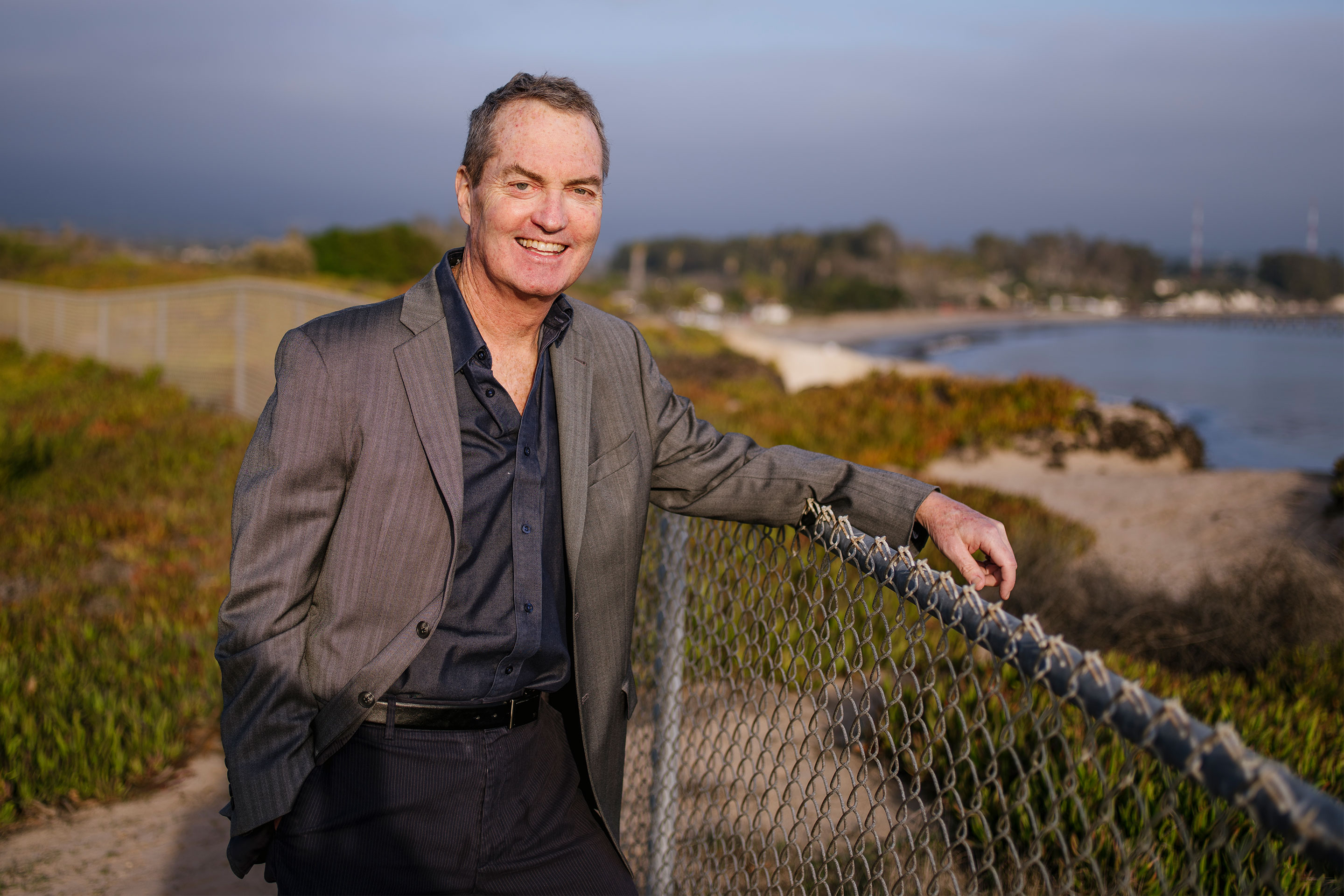Physicists Mourn Joe Polchinski, Developer of Deep Ideas and Paradoxes

Joe Polchinski in Santa Barbara, California, in 2016.
Brinson Banks for Quanta Magazine
Introduction
In physics, we sometimes make progress through conflict. Thought experiments uncover apparent contradictions that sharpen our theories. In addition, there’s often a trade-off between the precision of a calculation and its relevance to an ultimate goal.
The physicist Joe Polchinski was the rare exception who often managed to avoid such trade-offs. He developed concrete methods relevant to major problems. He also had a knack for uncovering fruitful conflicts, marshaling his own extensive, almost contradictory talents.
Joe was radically conservative, following well-supported physical principles to their logical conclusions, however extreme or surprising. Less circumspect on a road bike, he would tear down a descent. He was irreverent yet dignified, pragmatic but positive. Although competitive, he was a consummate good sport who took joy in the successes of others. The community is reeling from the loss of such a brilliant physicist and extraordinary human being. Joe died earlier this month from brain cancer at age 63.
Polchinski made an enormous impact, not just on theoretical physics but on other physicists. I recall delightfully succinct discussions where we put our finger on the essential crux of a problem within a matter of minutes. Perhaps this efficiency helps to explain how he was able to transcend the limited circles in which most scientists operate. Working for the last 25 years at the Kavli Institute for Theoretical Physics at the University of California, Santa Barbara, he interacted meaningfully with much of the theoretical physics community worldwide, conscious of the fact that important insights come from all quarters.
In an early paper, Joe derived an exact equation for characterizing how certain quantum systems behave at different length scales, determining which variables remain important even as you zoom out. The problem is particularly challenging in condensed-matter systems such as metals. Joe’s 1992 lectures remain a classic on this topic, one to which he returned repeatedly, applying new tools to attack complicated cases in which constituents of a material interact very strongly.
Around 1995, Polchinski made a far-reaching discovery that permeates string theory and related areas of physics. It started with a technical observation. He noticed that strings — the one-dimensional lines whose vibrational states theoretically correspond to different particles — can end on higher-dimensional dynamical objects. These objects, dubbed D-branes, play an essential role in the unification of different versions of string theory. They are extended in some directions and sharply localized in others. As a result, they help us trace out space-time geometry even in regions where it becomes highly curved, as at problematic points known as singularities.
D-branes play a major role in theoretical black hole physics, another long-standing interest of Joe’s. Researchers in the 1970s calculated that the increase in entropy of a black hole corresponds to the increase in the size of its horizon. In ordinary thermodynamics, entropy is a count of all the different possible microscopic configurations of a system. It was soon understood that a black hole’s entropy corresponds to countable configurations of D-branes, at least in theoretical black holes with extra symmetries that enable precise calculations.
The strings that end on the branes behave like particles at large distances and can be described by quantum field theory (where the particles are excitations of fields). This led to the discovery of the so-called AdS/CFT correspondence, an exact connection between quantum field theory and quantum gravity in special space-time geometries. This correspondence has generated a huge amount of research, including insights into the strong interactions that govern atomic nuclei.
In our first collaboration — showing that instabilities that seemed like a nuisance in string theory actually played a positive role by resolving space-time singularities — D-branes were useful, but Joe was not overly partial to them. Years ago, he remarked that worrying how many times your papers have been cited “is antithetical to really creative work.” He initiated more than his share of lasting developments without following trends or getting into ruts.
In important recent work, Polchinski reinvigorated an old paradox about black holes. Quantum fluctuations near the horizons of black holes cause them to slowly evaporate via thermal radiation. Theorists have long sought to understand how black holes evaporate in a way that preserves information about what fell in, as required by quantum mechanics. In 2012, Joe and his collaborators sharpened this problem, finding that either general relativity, or quantum mechanics itself, must break down. They proposed that a black hole’s horizon might be replaced by an impenetrable “firewall.” An explosion of work ensued about the theoretical underpinnings of the firewall paradox, as it’s known, including the relationship between entropy and space-time physics, the evolution of many-body systems, and long-range interactions in string theory.
About 20 years ago, astrophysicists discovered that the expansion of the universe is accelerating, driven by an incredibly small source of energy infused in space, known as the cosmological constant. In recent decades, extensive observational evidence has mounted for the idea that the universe expanded even more rapidly very early in its history, in a process known as inflation. The elements of string theory that Joe developed are intrinsic to recent attempts to better understand how inflation happened and why the cosmological constant is so small.
For example, subtle objects Joe named “orientifolds” may contribute local dips in the potential energy of fields that permeate space. The dips would be important for stabilizing the fields during accelerated expansion. Generalizations of the electromagnetic field, related to charged D-branes, also feature in many models of accelerated expansion. The D-branes themselves may host or interact with the “inflaton field,” a field whose slowly diluting energy powered inflation. Many of these scenarios use a detailed method for stabilizing fields developed by Joe and his collaborators, who fruitfully combined elements of the AdS/CFT correspondence with gravity in our four-dimensional world.
The total number of solutions to the equations of string theory is not bounded in any known way, although their structure is highly constrained. The resulting “landscape” of possible universes with different properties is a rich arena of research, full of beautiful physics and mathematics. It leads to challenging conceptual questions, and some controversy.
In seminal work in 2000, Polchinski and a collaborator argued that the plethora of solutions of string theory enables the small value of the cosmological constant to be interpreted as a selection effect. That is, a significantly larger value would not be consistent with our existence — it would have caused space-time to accelerate apart too quickly for structures to form — so it makes sense that we inhabit a universe with a small cosmological constant. Other universes with different properties (making up a “multiverse”) are not generally visible, raising concerns about how such ideas can be tested. On the other hand, the string landscape also led to new ways to compare theories of inflation with observations being done now. Joe himself thought extensively about the possibility of observing cosmic strings — essentially stretched-out strings in the sky.
In the weeks since Polchinski’s death, there has been an outpouring of grief and appreciation online. “The memories that come back most vividly involve Joe’s sense of fun, his utter lack of pretension and the way he had of treating everyone equally,” wrote Markus Luty, a physicist at the University of California, Davis. “Joe did not lower his standards for anyone, but he made those around him feel significant with his intense way of listening and engaging with them.”
An avid cyclist, Joe enjoyed epic rides with friends, exploring the mountainous landscapes in California, Colorado and beyond. These high-spirited, intense adventures also led to more physics, at least when it was possible to hold a conversation. On one occasion, a few of us were drafting behind Joe, and he inadvertently led us off road, later explaining that he’d been thinking about entropy. In Santa Barbara, he took varied groups of physicists up Old San Marcos Road, delighting in the progress of new riders. He pushed himself hard and applauded his friends enthusiastically whether ahead or behind him on the road.
I worry about the loss of his perspective, which has been indispensable at times as the field tries to converge on the right answers or, in lieu of answers, the appropriate level of uncertainty. As the community mourns his loss and celebrates his major contributions, we have our work — and fun — cut out for us on the questions he left behind.



